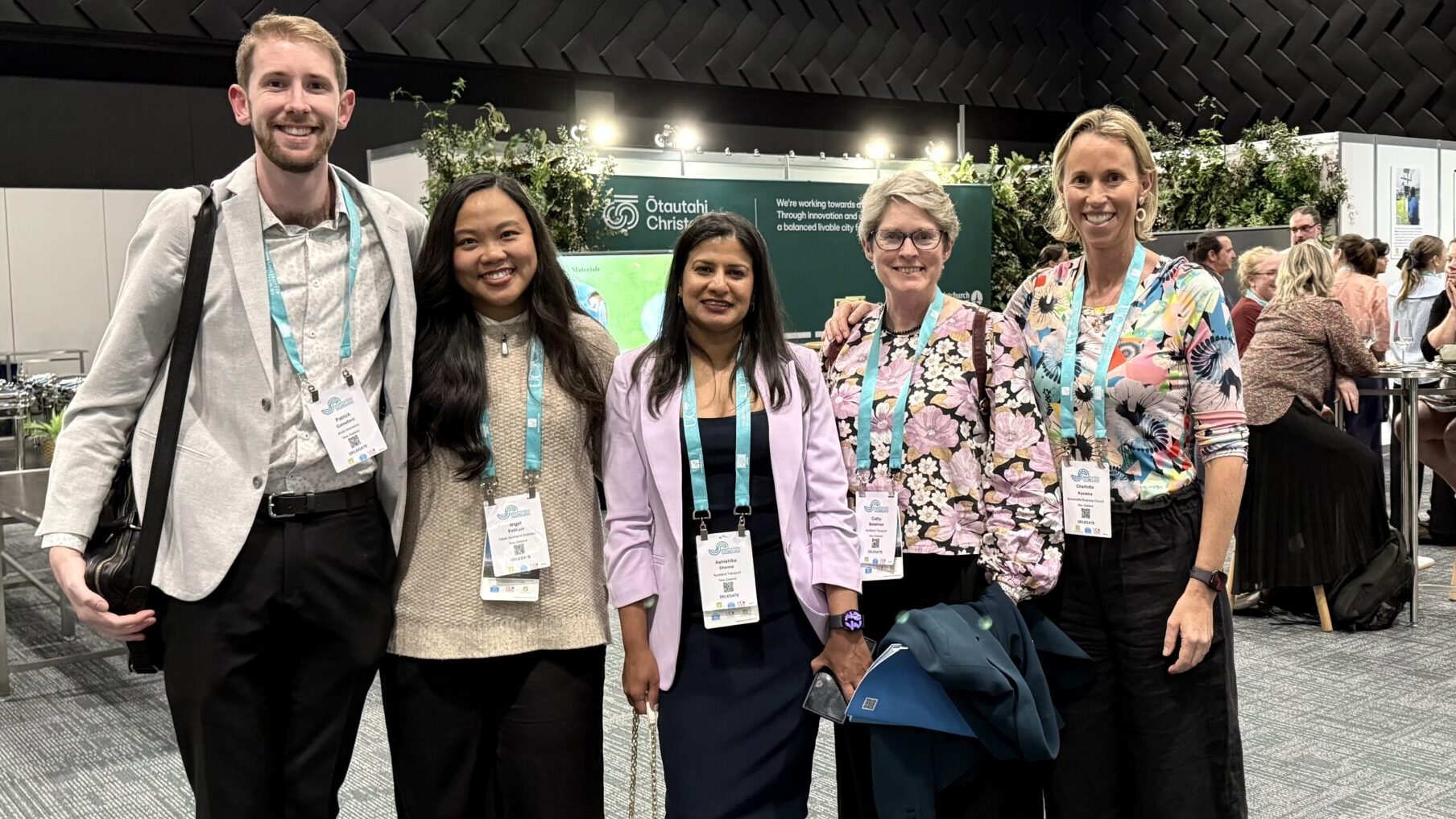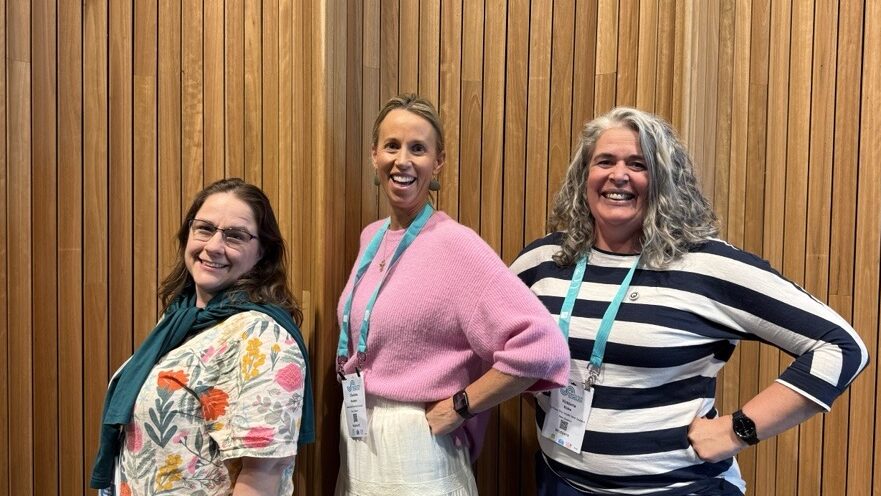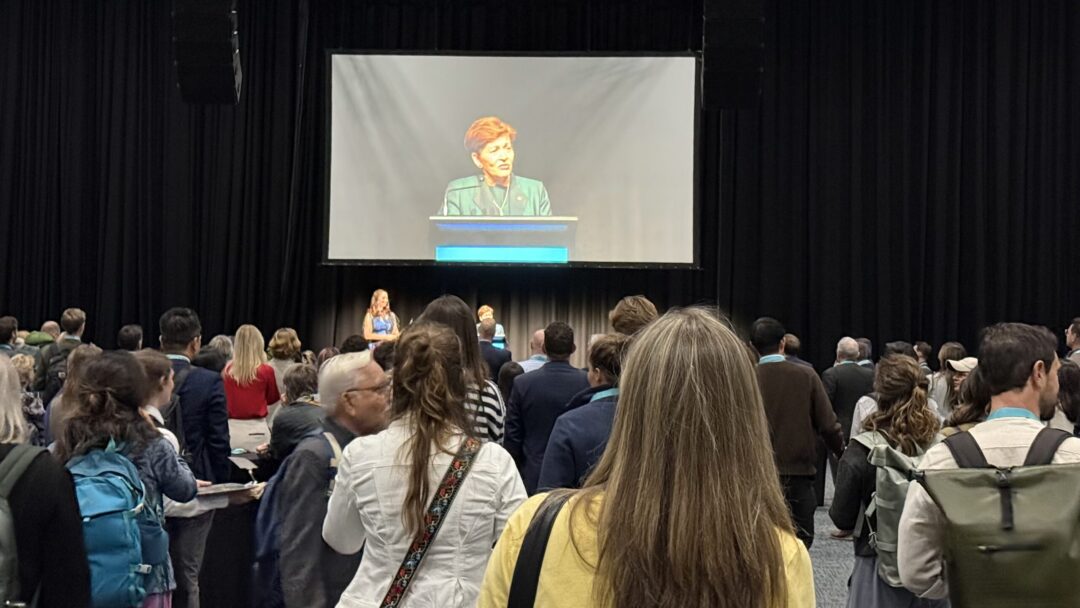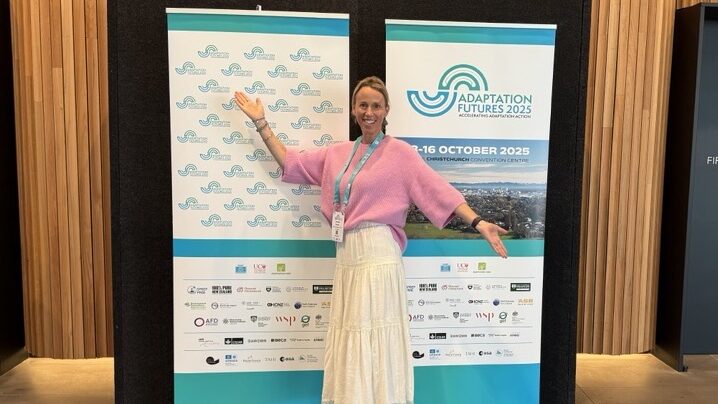By Charlotte Kootstra, SBC’s Manager – Climate & Environment
What do superheroes, insurance, and trust have in common?
They were all front and centre at the Adaptation Futures Conference 2025 – held for the first time in the Southern Hemisphere, right here in our very own Ōtautahi Christchurch. The days were filled with deep kōrero, global insights, and powerful reminders that adaptation isn’t just a technical challenge – it’s a deeply human one.

Here are my top takeaways and their relevance to business:
1. Insurance: the early warning system for climate risk
A pressing question that emerged: How do we adapt to a changing climate while keeping insurance within reach?
Rising premiums and shrinking coverage are no longer hypothetical – they’re happening now. For businesses, this isn’t just a finance issue; it’s a strategic one. Insurance costs are becoming a key input into transition planning and scenario analysis. If your board isn’t already discussing this, now’s the time to bring it to the table.
2. Finance vs Funding: know the difference
We heard about the importance of distinguishing between funding and finance:
- Finance is generally private, long-term, and return-driven
- Funding is typically public, short-term, and often grant-based
To unlock transformative adaptation, we need to blend both – and design systems that align capital with resilience outcomes. As one speaker put it, “It’s not just about more money, it’s about using it better.”

3. Superheroes of adaptation
From Pacific Island leaders to local councils, superheroes of adaptation are already among us.
They’re rolling up their sleeves and getting on with it. Businesses can learn from this courage and partner with communities to co-create solutions that are grounded, inclusive, and built to last.
4. Community is the cornerstone
Adaptation isn’t something we do to communities – it’s something we do with them.
Empowering local ownership and building capacity at the grassroots level was a powerful thread throughout the week. For businesses, this means moving beyond consultation to collaboration. It’s about listening, sharing power, and designing with – not for – communities.
5. Trust: the invisible infrastructure
“You can fund projects, but you can’t buy trust.”
Resilience doesn’t stick without trust – it’s the quiet force behind every lasting solution. Whether it’s between government and iwi, businesses and communities, or across sectors, trust is the foundation. And it’s built slowly-through relationships, transparency, and showing up when it matters most.
6. Behavioural science is the missing link
Adaptation isn’t a numbers game – it’s a people game.
We heard from a behavioural scientist that adaptation decisions are deeply human shaped by identity, emotion, and social norms. If we want people to move, retrofit, or change practices, we need to design for real-world behaviour, not just ideal models.

7. Indigenous leadership is leading the way
From Tuvalu to Tairāwhiti, indigenous voices brought wisdom, urgency, and vision.
Their leadership isn’t just inspiring – it’s essential. Businesses must centre indigenous knowledge and partnership in adaptation planning. As one speaker said, “To choose life over short-term profit” is not just a moral imperative – it’s a strategic one.
8. Adaptation is a journey, not a destination
One question that stuck with me was, “What is the destination of adaptation?”
It’s not just about reducing risk. It’s about enabling communities to thrive – culturally, socially, and economically. For business, this means embedding adaptation into core strategy, not treating it simply as a compliance exercise or a box to tick.
9. Final thought: collaboration is the superpower
Whether it was the launch of the Aotearoa Society of Adaptation Professionals (ASAP) initiative, the living labs showcasing climate adaptation in action, or the packed Climate Change Commission workshops, one thing was clear: we’re stronger together. Adaptation is complex, but not impossible. It requires systems thinking, shared responsibility, and bold leadership across business, government, and community.
Let’s keep the momentum going. Let’s be the superheroes of adaptation.
I’ll be continuing to unpack and explore these insights as part of SBC’s Adaptation Community of Practice. If you’re keen to learn more or get involved, please get in touch!


